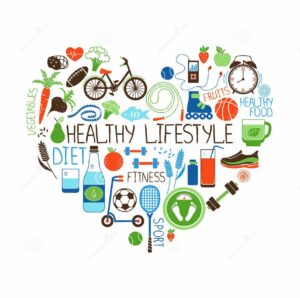Do you take care of yourself? REALLY take care of yourself?
What does self care actually mean for you?
The busyness of everyday life, the juggling of commitments and responsibilities plus the never ending to do list can all take their toll on even the strongest most resilient among us. The phrase ‘recharge your batteries’ is used a lot – but how do you ensure that your ‘battery’ really is recharged so you can be the best version of yourself? How can you tell when your battery is running low?
At Go Well, we have adopted the ‘Six Dimensions of Wellness’, developed by Dr Bill Hettler, co-founder of The National Wellness Institute: https://nationalwellness.org/resources/six-dimensions-of-wellness/

This model enables us to focus on parts of our life where the impact of action has a positive effect on our daily life and as a result our mental health.
This open and honest personal reflection might give food for thought as well as throw a spotlight on your own self care plan!
Those six dimensions contribute to a collection of self care options and the potential to focus on some or all of them in order to maintain the version of ourselves which we know allow us to function well in our everyday life.
What could that look like? These examples might get you thinking;

There may be some of these dimensions which feel easier to address than others, there may be some aspects mentioned which we seldom get an opportunity to consider – but for me, when I reflect on what makes me well and what recharges my batteries, there are a couple of stand out cogs which really help my metaphorical wheels keep turning;
Social – Being Connected.
Feeling low? Phone a friend!
Got some exciting news? Phone a friend!
Need to rant? Phone a friend!
That’s always been me – sharing news, experiences and stories with those closest to me and harvesting the responses, the commiserations, the support and advice, the sympathy at times as well as the laughs – a range of outcomes needed at different times and all met through connection.
However, being truly connected is much more than that for me. Being able to reach out when things are going wrong and know you have people to lean on is like a security blanket. Having those friends and family members who see you at your lowest and help you reach back up to where you want to be is priceless and if we are lucky, we can all picture those people in our lives. Also, the knowledge that somewhere along the line, this is reciprocal – feeling that connection in the other direction when a friend needs to lean on you, being valued as someone who can be turned to – what a privilege.
Friendship is a partnership, play your part and enjoy what then surrounds you
Making an effort to initiate, maintain or react to connection takes effort, but responding to that text, answering the email, picking up your phone brings that Oxytocin brain chemical boost that we all often crave. Feeling wanted and part of a group is human nature – lockdown won’t lessen that desire, it just demands that we feed our craving for it in a different way.
Seek out those who bring something positive to your life and welcome them
Be the positive influence that someone else might need.
Lockdown has brought with it a detraction from human contact as we know it, our family and our friends unable to be a presence on our doorstep. And then came ZOOM! For even the most technically challenged (who, me..?!) the chance to feel we have been in the same room sharing quiz, a chat or just a smile has been a new experience for some and a welcome opportunity to remind ourselves of who is out there holding our hand along the way. Connection.
Find ways to be together when you can’t BE together. Unleash your creativity!
Sharing a meal time as a family – if we manage just once a day, it works for us! An opportunity to not only refuel our bodies but our links to each other too. ‘What made you smile today?’ ‘What was the best part of your day?’ ‘Any plans for the rest of the week?’ ‘How are you REALLY doing?’ Food for the soul. Perhaps consider how often a family meal would work for your family?
Use every opportunity to connect and reconnect, take the time and make the effort, feel the benefits.
Bonding with our neighbours like never before. Standing on our step and clapping for our NHS led to chats across the street; finding out our neighbours hobbies, which books they like to read, popping out to sing ‘Happy Birthday’ when no one else could visit to do it, a shared recipe for soup, a plan for a street party post-COVID where we will invite the world! Never again will these people just be faces in our street, we know them, we have forged connections and we have shared the experiences of some of the trickiest times lately. That knowledge of being part of a community and a sense of wanting to be there too. Create a WhatsApp Group for the neighbours? I’ll do that. No longer will anyone just sit at home and wonder if the couple at number 2 are ok…do they need some milk picking up while I’m out? We’re on it. Connection.
Be open to making new connections and enjoy the surprises!
Physical – Being Active
As the reality of lockdown hit us, and the list of things we couldn’t do seemed to grow – the one thing we COULD do was be active. The Government encouraged us to walk, run or cycle, keeping our bodies as well as our minds fit and healthy. For me, grasping this invitation was vital in order to maintain not only my physical health but my mental capacity to cope, to gain some perspective at such a confusing time, a chance to clear my head and tackle things with fresh eyes, an opportunity to experience a surge of those much needed feel good chemicals in my brain which would help me take care of myself, as well as prepare me to be stronger to take care of those around me. Self preservation.
To run – on the footpath, on the road, through mud, enjoying the sunshine or the dark of night became my solace! Conversations with myself as well as with my amazing running buddy who shares this mindset, the miles we covered putting not only the world right, but ourselves too. Fast running, slow dawdling, jogging, running familiar routes and the fun of getting lost and discovering new places, out for ages or back home in a flash…it really didn’t matter, but what did matter was that every time I looked for an excuse not to go, I remembered how I felt the last time I ran – and I laced up my trainers.
The elation of our first 10k – a virtual version of the long cancelled event in our town – and the euphoric feeling of my running buddy and I crossing our imaginary finish line is a precious memory and the buzz from it lasted days! To crave those highs that keep me so well is a habit I will forever be grateful to 2020 for.
Explore until you discover a physical activity you enjoy, remember the feelings you experience as you enjoy and complete – and repeat!
So, what is YOUR self care plan? How do you maintain the best version of you? Have you got a plan…or do you need to create one?
This plan will have you at the heart of it, it’s for no one other than you and no one understands what makes you tick better than you. So be kind to yourself, think your plan through and start it today. Help yourself to be the best version of you – because that version is brilliant!
I hope you found this blog helpful, Annalisa (annalisahopkins@go-well.org).



